It was much warmer today when we set off, a bit earlier than recently. No need to put on my jacket. The day was quite hazy, but with a clear pale blue sky.
We had options – either a track following a busy road to our destination or a slightly longer route over tracks and on quiet roads. We opted for the second, and got it right this time.
We started on a track through scrub land, then continued on a road over a motorway, back onto a track through scrub and cultivated land, and to a pretty village with some benches in the sunshine where we stopped for a bite of beakfast from our supplies. I have decided that today I will take pics of the ugly as well as the good, to better illustrate the landscape we are walking through.
Then there was a long stretch on a country road – there were lots of storks around, nesting, walking through the pasture and flying.
It seemed that every tractor in the area was out and working this morning.
We passed through another village and then followed a railway track for quite a way.
There are a lot of water towers in this area, presumably because it is so flat. Most of them are very utilitarian but this one was pretty.
There are also canals carrying water to the gullies that surround the fields.
During the day’s walk we passed lots more of these hobbit houses, most seemed to have been deserted, we went close to have a look and found that from the entrance very steep stairs led to what appeared to be a spacious area below. They are very odd and we can’t work them out. I have looked on the Internet but can’t find any information about them.
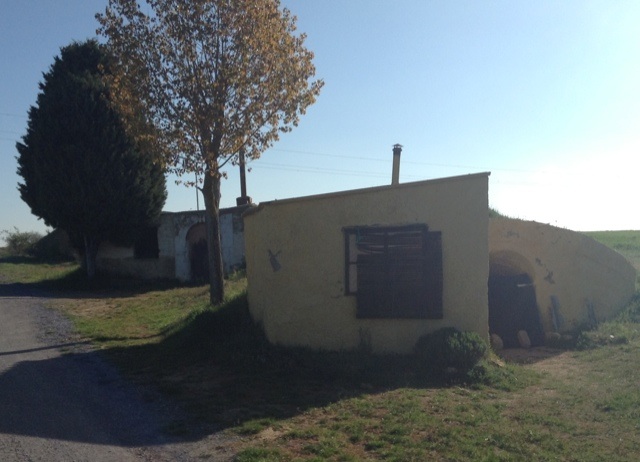
We finally reached our destination of Hospital de Órbiga, a good sized town with some interesting architecture but with no atmosphere whatsoever.
The albergue is ok. Two dormitories, there are 22 beds in ours, over 11 bunks. We had reserved so fortunately have lower bunks. They are very close together with barely room to move between the beds. The shower cubicles, wc’s and wash basins are on an open landing between the dormitories which give absolutely no privacy whatsoever. They are clean and function well but I hate the fact that it is all so open.
Today was quite hard on my feet. Walking on asphalt seems to draw your feet through the soles of your boots. Now that we don’t have the discipline of walking with Søren, we are not stopping to rest regularly. We left this morning at 7:30am and arrived at the albergue at about 2:30pm, we took three breaks totalling 1hr 10mins, so were walking solidly at a fast pace for 5hrs and 50 mins. Ella doesn’t like to stop because she finds it hard and painful to get going again, but I really benefit from a short stop at regular intervals. Ella’s feet are getting a bit better now so perhaps I can persuade her to rest more regularly in future.
As far as the terrain goes, we have had more than a week of fairly level walking, but we start to face steep inclines again as from tomorrow, working our way towards the highest point of the camino the following day, and then a tremendous descent after reaching the peak. I am really not looking forward to this because it will be very hard on my knees. I have significant swelling and pain in my right knee which is triggered by walking downhill, amongst other things. I have already had to restock with ibuprofen which controls the pain quite well.
I think this is quite normal procedure amongst the pilgrims of a certain age, whose knees have already taken a lifetime of abuse.
The various guide books, maps and other information we found have stated a distance for today’s walk of between 25 and 30 km, so I have opted for middle ground and stated 27, although to be honest it felt more like 30!
We have now walked over 500 km. If we make it to Finisterre we will be walking virtually 400 km more. In this one town alone, we have seen three signs each stating three different distances to Santiago, but all are under 300 km.





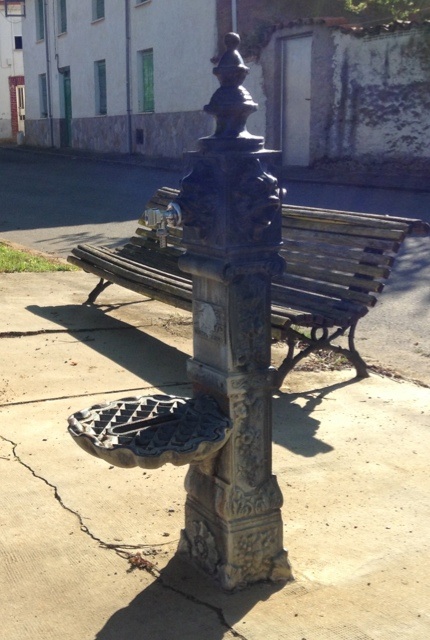



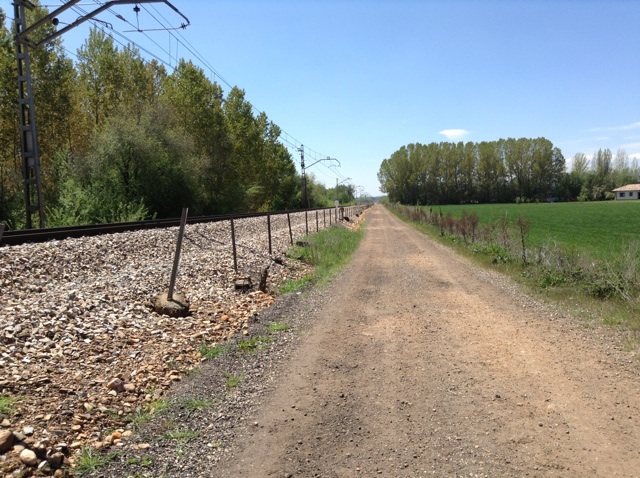
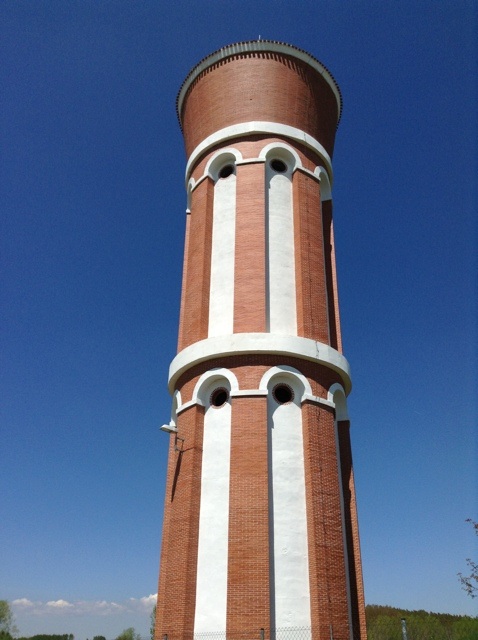
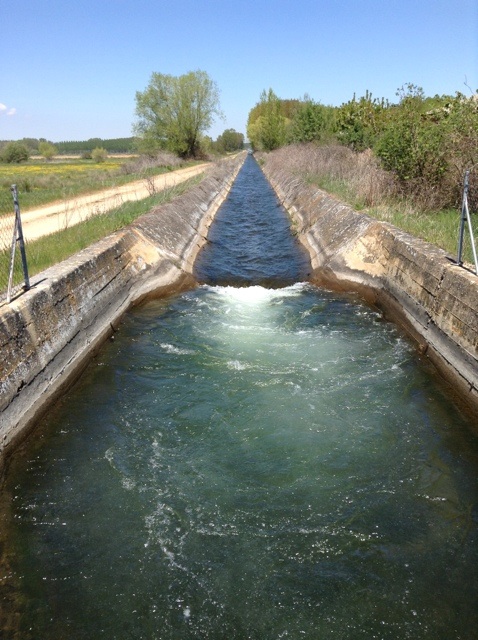

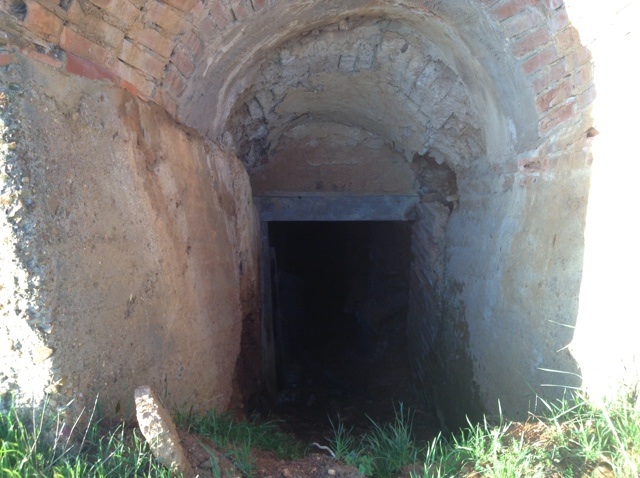














Hi Maggie, saw David at lunchtime enjoying some music at Fernan´s and he told us about your adventure. We have added a little to your sponsorship list and wish you well for the rest of the journey. I sympathize with your knee pain, mine wouldn`t have lasted a single day!
Cheers, Katherine
LikeLike
Hi Maggie, time to catch up with your after all the whirl of relocating back to Denmark from Spain. You and Ella are moving at such a pace that I’m having to run! Good to hear the weather has warmed up and your expertise at finding the right route each day is growing. Worried about your poor old feet and knee. Stay off the asphalt! And perhaps do some shorter days to allow your body to catch up with your multi-kilometer long ambitions, not to mention Ella’s feet? Fascinated by your “hobbit houses” (love your descriptive naming of them). I shall have a go at Googling them to find out more and will report back. Horrified by the “communal” washing and toilet area. Ugh! I’d have stayed dirty. After all, you must have got pretty clean in the lovely hotel you bust the budget on (a sensible budget decision, if ever there was one). I was mightily touched by the wonderful piece you wrote about your old Dad (Day 15, I think) and keenly reminded of how much we are all such products of our parents. I had a distant relationship with my father until I was an adult but fortunately managed to get close and appreciate all he has given me before cancer struck. That was mainly due to his determination to come visit in Denmark for so many summers and the close bond he created with son Kent, rather than the efforts I made to reach out, I sadly admit. In Kent, also 30 this year like Ella, I see strong traces of my father’s doings and sayings, though Kent was only 16 when he lost his grandfather to the Big C. But perhaps those turns of phrase and interest in all things and beings outdoors has been passed to Kent through me rather than directly from my father! The photo of you and Ella from Day 18 is wonderful. You look changed. Very relaxed with all your kindness showing through. It’s as if somebody has wiped your troubles away. Indeed, all your photos are getting better and better. Yours have much greater variety than many of those from other blogs. The effort you put into sharing them is much appreciated and I’m glad to hear we’ll also now get to appreciate the grotty bits of the walking as well. Right, time to pop off and Google Hobbit Houses in northern Spain. Miss you, so proud of your achievements, but feel for your feet and knees! Lyn XXX
LikeLike
Fairly unbelievably, after an hour of searching various terms in English, I can find nothing definitive about Maggie’s Hobbit Houses, only some information from which we could make educated guesses. Here goes. Dugout structures are one of the most ancient types of human housing known to archeologists and are found all over the world. The building methods have evolved into modern “earth shelter” technology. They need little heating in winter and are cool in summer. In Tunisia, where the Berbers of Matmâta were first driven underground by enemies who invaded their country, underground homes were found to be the best defense against summer heat. My guess is that Spain’s dugouts could have been an adaptation of those introduced to the country by the Berbers during rape and pillage invasions! Lots is available on dugouts in other countries, from China and Australia, to Poland and Scotland and across to Canada, to name but a few. In comparison, little is written about them in Spain (in English), though they are mentioned in passing and referred to as “famous features.” Dugouts have played a big part in wars, also in the trench warfare of WW1 and in WW2. Apparently, in World War II, partisans, or armed resistance fighters in Eastern Europe sometimes lived in dugouts called zemlyankas. Could your Hobbit Houses have seen be a relic of the Spanish Civil War (which I’ve read so little about that I’m now prompted to do something about it!)? From Canada, another clue: dugout houses were constructed by Doukhobors (a Russian religious sect) upon their arrival as immigrants in Canada and a form of shelter used by many settlers of various ethnicities upon their arrival on the prairies. Ancient pithouses were apparently also a feature of the American Southwest and the following description is reminiscent, I think, of what you’ve seen in a more modern form from the last century: Pithouses were built by excavating a well defined hole into the ground, usually around 6″ to 18″ deep but occasionally as deep as four to five feet, and creating walls and roof using a pole and adobe technology. The sunken floor of the dwelling is below the frost line and helps moderate both winter and summer temperatures, with the mass of the ground serving as an insulator. In addition, adobe walls gather heat during the day and release it when temperatures drop. The earliest pithouses were round, and varied in size between nine and twenty-five feet in diameter. Around AD 700, pithouse designs became more individualized. Not much help, really, but interesting!
LikeLike
Keep it up ladies 🙂
LikeLike
Admirable that you’re fighting through all the discomfort, weather and not so lovely scenery. I am considering the camino and I’m wondering how much of it is unpleasant to the eyes, roads, industrial zones, etc. Also what percentage is steep going up or down, and whether these areas can be avoided (with a bus or taxi) to spare a bad knee from getting seriously worse. You can understand knee problems from your post, likely!
LikeLike
I read somewhere that asphalt : track is about 40:60, and I would guess this is about right.
Some asphalt runs alongside motorways and other busy roads, or through industrial areas and is very ugly. Other roads pass through beautiful countryside, but although asphalt is smooth usually easy to walk, it is always harder on the feet. Not sure why this is.
Apart from the meseta there are steep hills to be tackled practically every day. Some days are like a rollercoaster of inclines and descents, one after another. Other stages might just have a few hills. Somehow there always seemed to be a steep hill to tackle at the beginning of the day.
LikeLike
The ‘Hobbit houses’ are bodegas wine cellars but I bet a hobbit would love to live in one and merrily sip the contents 😉
LikeLike
Hi Nell Peregrina, thanks for the info – I now have a very distinct image in my mind!
LikeLike
Hi really enjoying your blog. I walked the Camino Frances solo in 2015 so enjoying thinking about it all again. The Hobbit houses are Bodegas or wine storage I believe, keeps everything at correct constant temperature.
LikeLike
Hi Raewyn, thanks for your info.
LikeLike